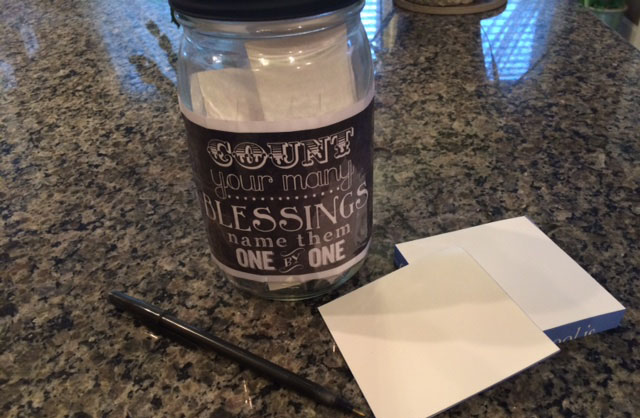
Several years ago, I was privileged to join Heart to Heart on a trip to Guatemala. We were installing water purification units and distributing deworming pills for the kids. The people  were so grateful for clean water—something we take for granted in the United States. The homes we visited were small enough to fit into my bedroom, with thin corrugated steel walls and leaky roofs. Most of the kids only had one extra pair of clothes. No iPhones. No computers. And yet, they were happy. They were grateful for what they had. (Check out the book I wrote for Heart to Heart about their water purification project.)
were so grateful for clean water—something we take for granted in the United States. The homes we visited were small enough to fit into my bedroom, with thin corrugated steel walls and leaky roofs. Most of the kids only had one extra pair of clothes. No iPhones. No computers. And yet, they were happy. They were grateful for what they had. (Check out the book I wrote for Heart to Heart about their water purification project.)
I hope that one day my kids can go with us to serve in a third world country. I want them to experience what it’s like to live without so much excess. This could be a life-changing adventure for your family as well. I don’t know about you, but my family will need to save money for a while to get us there. In the meantime, here is a thought you can discuss with your teenagers: What if you woke up today with only the things you thanked God for yesterday?
A project for all ages, is to write down your blessings. You can do this in a journal (like my family did after reading One Thousand Gifts), or you can write them on strips of paper and put them in a jar or box. This could be a year-long project. Your family could read all of the blessings on Thanksgiving or New Year’s Eve. I’m just starting this method with my own family.
A visual way to teach the concept to younger children could be through the book The Blessing Jar by Colleen Coble. The story is about a little girl who is having a bad morning.  Her grandma takes her on an adventure where they collect small objects related to happy memories. They place these objects in a blessing jar to remind them to be thankful, chasing away the grumpy attitude. After reading the book, you could begin your own blessing jar. This activity would be extra special if you had grandparents available to join in the fun.
Her grandma takes her on an adventure where they collect small objects related to happy memories. They place these objects in a blessing jar to remind them to be thankful, chasing away the grumpy attitude. After reading the book, you could begin your own blessing jar. This activity would be extra special if you had grandparents available to join in the fun.


 Through her unique poetic writing style, she encourages readers to see God’s grace in everyday life, and to find joy through gratitude. My family took her challenge to write down one thousand of God’s gifts. It took several months, but it changed our perspective. I need to continue the practice.
Through her unique poetic writing style, she encourages readers to see God’s grace in everyday life, and to find joy through gratitude. My family took her challenge to write down one thousand of God’s gifts. It took several months, but it changed our perspective. I need to continue the practice.
 It has a free cartoon video quiz called Think You Stink? that asks seven multiple choice questions. Once your child answers the questions, it gives a score and a level of “stinkocity”. Click on the “stinkometer” and your child will see their forecast, ranging from “Blue Skies with a chance of Sweet Scents” to “Severe thunderstorms and Tornado Warnings with Severe Reekness”. After receiving their forecast, they can see their prescription with helpful activities to combat stinking thinking. Examples are doing at least one kind deed every day, and a stinking thought awareness activity that sounds, well, stinky.
It has a free cartoon video quiz called Think You Stink? that asks seven multiple choice questions. Once your child answers the questions, it gives a score and a level of “stinkocity”. Click on the “stinkometer” and your child will see their forecast, ranging from “Blue Skies with a chance of Sweet Scents” to “Severe thunderstorms and Tornado Warnings with Severe Reekness”. After receiving their forecast, they can see their prescription with helpful activities to combat stinking thinking. Examples are doing at least one kind deed every day, and a stinking thought awareness activity that sounds, well, stinky.

